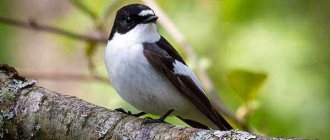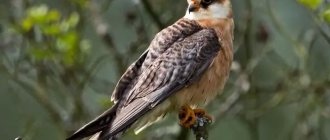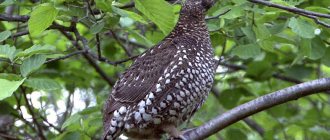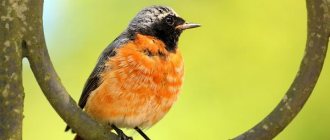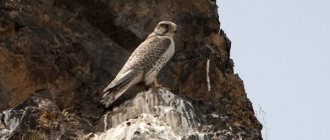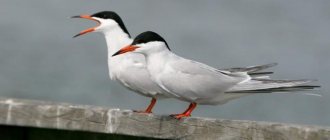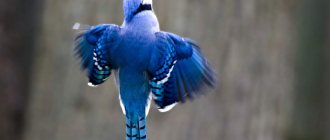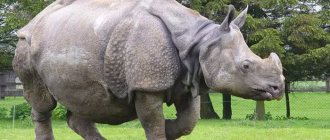Hornbills are large, charismatic birds with stocky bodies and disproportionately large beaks topped with “horns” of varying shapes, sizes and colors. But there is more to these birds than their distinctive appearance. Did you know that the flapping of their wings can be heard almost a kilometer away? Or that in regions where hornbills are protected, seed dispersal on the forest floor is seven times higher than in regions where their populations are not controlled? Get ready for a trip to the rainforests of Africa and Asia and learn more about these mysterious birds.
Scientific classification
- Kingdom: Animalia (animals)
- Phylum: Chordata
- Class: Aves (birds)
- Order: Bucerotiformes (hornbills)
- Family: Bucerotidae (hornbills)
The classification of these bizarre large-billed birds is still debated. Most modern taxonomic methods place hornbills in the order Coraciiformes (Coraciiformes), along with their closest relatives, the hoopoe (Upupidae) and tree hoopoe (Phoeniculidae). This classification is based primarily on the similarity of foot and jaw morphology, and the spiny appearance of the chicks, nicknamed "pincushions" . All birds of these families nest in tree hollows, but only hornbills block the entrance to them. However, after phylogenetic studies at the beginning of the 21st century, both families were assigned to the order Bucerotiformes.
59 species of hornbills in the world
All but two species belong to the subfamily Bucerotinae. The exception is the ground hornbills, which belong to the subfamily Bucorvinae. The distinction between them is based on unique anatomical and behavioral features, such as a greater number of cervical vertebrae and Bucorvinae's lack of the habit of sealing nests. In 2001, detailed molecular studies were carried out on these two groups. Scientists have discovered that ground-dwelling hornbills were likely the earliest form.
REPRODUCTION
The nesting period of kalao does not fall on any particular season. Birds usually nest when the ground in the forest becomes wet enough, which means it is suitable for building a nest. Typically, this period occurs from January to April. Kalao chooses a hollow for its nest, located at a height of 18 to 25 m from the ground. Having chosen a suitable place for the nest, the female begins to wall up the entrance to it. She does this without the help of a male. The male only presents her with building material: fruit pulp, clods of earth and branches. The bird holds all this together with droppings. Drying, the formed substance turns into a dense “concrete” wall. When the hole becomes smaller, the female squeezes into the hollow and seals herself from the inside. She leaves only a small hole through which the male gives her food, and the female throws out waste.
The mother remains walled up throughout the incubation and feeding of the chicks. The female probably lays 2 eggs, which incubate for about a month. Sometimes only one chick hatches. The male brings food to the female and the chicks that hatched from the eggs.
At the end of the nesting period, he becomes completely thin. Two to three months after the chicks hatch, the female breaks the “wall” and, together with the chicks, leaves the “imprisonment”. After this, the young kalao learn to fly.
Spread range
Geographical distribution
Hornbills are strictly Old World birds , meaning their range extends from sub-Saharan Africa through India and South Asia to Papua New Guinea and the Solomon Islands. They are not found in the Americas, where a similar ecological niche of medium-sized species is occupied by toucans.
Photo: Wikipedia
The largest and most widespread in Africa is the African gray toko (Tockus nasutus), whose population extends from the coast of Mauritania in the west to the Red Sea in the east and to Namibia in the south. Asia is dominated by hornbills of the genus Rhyticeros; their range extends from Bhutan and northern India in the west to the Solomon Islands in the east.
Two species of the genus Ocyceros, the Malabar toko (Ocyceros griseus) and the Indian gray toko (Ocyceros birostris), are found exclusively in India, while the distribution of the third species, the Ceylon gray toko (Ocyceros gingalensis), is limited to the island of Sri Lanka.
Photo: Jayakrishnan InfoLab
Some species of hornbills, especially those inhabiting oceanic islands, also have a limited distribution . Kalao-penelopides is a prime example of this. They are found only on a few neighboring islands of the Philippine archipelago: Penelopides manillae - Luzon, Penelopides panini - Visayas, Penelopides affinis - Mindanao, Penelopides mindorensis - Mindoro. The fifth species of this genus, Penelopides exarhatus, is found only on the Indonesian island of Sulawesi.
- Biogeographic regions: Africa, south and southeast Asia, Pacific and Indian Ocean islands
Habitat
Arid deserts, scrub forests, cool mountains and tropical rainforests are all habitats for hornbills. However, in general they are forest birds . Of the 30 species found in India and Southeast Asia, only the Indian gray toko lives on open savanna. In Africa, where forests are less extensive, the proportion of savanna species increases correspondingly; 60% of species live in savannas and forests, and the remaining 40% live in forests.
Photo: Christoph Moning
Species that inhabit savannas tend to have larger ranges, but, as with the red-billed lek (Tockus erythrorhynchus), can be divided into many distinct subpopulations due to impressive swaths of woodland. By default, endemic species are restricted to habitats. This is especially true of island species such as the Sumbian kalao (Rhyticeros everetti), which inhabits all forest types on its home island.
However, there are key features that should be present in all hornbill habitats:
- a large number of tall trees for nesting;
- sufficient year-round food supply;
- sufficient habitat to maintain population viability.
Although multiple species can simultaneously occupy the same habitat, each species has its own specific set of requirements. For example, in the forests of Thailand, where nine species of hornbills can coexist, the brown hornbill (Anorrhinus tickelli) uses smaller nests than the double-horned hornbill (Buceros bicornis). In Sumatra, where about the same number of species coexist, they usually feed on different foods; when diets overlap, hornbills share habitat , feeding at different heights in the canopy.
Photo: Chien Lee
Habitat quality influences the number and diversity of hornbills. Habitat size also limits bird populations. On the island of Sumba, hornbills are rare; forest patches here are less than 10 square meters in size. km.
- Habitat: tropical, subtropical
- Terrestrial biomes: savanna, rainforest, bush, mountains, desert
References
- ^ a b
BirdLife International (2018).
" Buceros bicornis
".
IUCN Red List of Threatened Species
.
2018
: e.T22682453A131870948. - Hodgson, B. H. (1833). "Description of Buceros Homrai in the Himalayas". Asian Studies
.
18
(2): 169–188. - ^ a b
Dunning, John B. Jr., ed. (2008). CRC Handbook of Avian Body Masses (2nd ed.). CRC Press. ISBN 978-1-4200-6444-5. - Holmes, D. A., & Nash, S. (1990). Birds of Sumatra and Kalimantan
. Oxford University Press, USA. - Raman, T. R. Shankar (1998). "Aerial helmet of the great hornbill Buceros bicornis
" (PDF).
Fork
.
13
: 123–124. Archived from the original (PDF) on October 7, 2007. Retrieved March 9, 2014. - Kemp, A. S. (2001). "Family Bucerotidae (hornbills)". In del Hoyo, J; Elliott A; J. Sargatal (ed.). Directory of birds of the world.
Vol. 6. From mousebirds to hornbills . Lynx Editions, Barcelona. pp. 436–523. - ^ a b c d
Ali, S;
S. D. Ripley (1983). Handbook of the Birds of India and Pakistan
.
4
(2nd ed.). Oxford University Press. pp. 143–146. ISBN 978-0-19-562063-4. - Blanford W.T. (1895). Fauna of British India, including Ceylon and Burma.
Birds .
3
. Taylor and Francis, London. pp. 142–146. - ^ a b
Baker, E. C. S. (1927).
Fauna of British India, including Ceylon and Burma.
Birds .
4
(2nd ed.). Taylor and Francis, London. pp. 284–285. - ^ a b c
Rasmussen, PC.;
Anderton, J. C. (2005). Birds of South Asia: Ripley's Guide.
Volume 2 . Smithsonian Institution and Lynx Editions. pp. 273–274. - Deignan, H. G. (1945). "Birds of Northern Thailand". Bulletin of the United States National Museum
.
186
(186):1–616. doi:10.5479/si.03629236.186.1. - Owen, R. (1836). "On the anatomy of the concave hornbill, Buceros cavatus
, Planck."
Proceedings of the Zoological Society of London
.
1
(2): 117–122. Doi:10.1111/j.1096-3642.1835.tb00609.x. HDL:2027/hvd.32044107323750. - King, William (1865). "The Story of the Kolymullais, one of the mountain ranges in the Salem district of the Madras Presidency." Madras Quarterly Journal of Medical Science
.
8
: 266–282. - Robinson, H. C.; Chasen, F. (1939). Birds of the Malay Peninsula.
Volume IV: Birds of the Lowland Jungle and Shrubland (PDF). Witherby: London. pp. 90–91. - Dutta, A. (1998). "Abundance of Hornbills in Unflooded Forest, Selectively Logged Forests, and Plantation Forests in Arunachal Pradesh, India." Oryx
.
32
(4):285–294. Doi:10.1046/j.1365-3008.1998.d01-58.x. - Whistler, Hugh (1949). A Popular Guide to Indian Birds
(4th ed.). Gurney and Jackson, London. pp. 304–306. ISBN 978-1-4067-4576-4. - Raman T. R. Shankar; D. Mudappa (2003). "Correlators of Hornbill Distribution and Abundance in Tropical Forest Fragments of the Southern Western Ghats, India." Bird Conservation International
.
13
(3): 199–212. Doi:10.1017/S0959270903003162. - Poonswad, P.; Tsuji, A. (1994). "Ranges of male Great Hornbill Buceros bicornis
, Brown Hornbill
Ptilolaemus tickelli
, and Wreathed Hornbill
Rhyticeros undulatus
in Khao Yai National Park, Thailand."
Ibis
.
136
: 79–86. Doi:10.1111/j.1474-919X.1994.tb08133.x. - Datta, Aparajita Datta; G. S. Rawat (2003). "Foraging patterns of sympatric hornbills during the non-breeding season in Arunachal Pradesh, Northeast India". Biotropica
.
35
(2): 208–218. Doi:10.1646/02103. - Kannan, Raghupati Kannan; Douglas, A. J. (1999). "Fruiting phenology and conservation of the great pied hornbill ( Buceros bicornis
) in the Western Ghats of South India."
Biotropica
.
31
(1): 167–177. Doi:10.1111/j.1744-7429.1999.tb00127.x. - Sethi, Pia; Hou H (2009). "Recruitment of Tree Hornbills Dispersing Hornbills in Hunted and Logged Forests in the Eastern Himalayas of India." Conservation Biology
.
23
(3):710–718. Doi:10.1111/j.1523-1739.2008.01155.x. PMID 19220369. - Wood, W. S. (1927). “Is the great hornbill Dichoceros bicornis
a carnivore?
". Journal of the Bombay Natural History Society
.
32
(2):374. - Poonswad, Pilai; Atsuo Tsuji and Narong Jirawatkawi (2004). "Evaluation of nutrients supplied to nest mates by four sympatric hornbill species in Khao Yai National Park, Thailand" (PDF). Ornithological Science
.
3
(2):99–112. Doi:10.2326/osj.3.99. - Fooden Jack (1975). "Taxonomy and evolution of lion-tailed and pigtailed macaques (primates: Cercopithecidae)". Fieldian Zoology
.
67:84
. - ^ a b c
Kannan, Raghupati;
James, Douglas A (1997). "Breeding biology of the great spotted hornbill ( Buceros bicornis
) in the Anaimalai hills of southern India."
Journal of the Bombay Natural History Society
.
94
(3):451–465. - James, D. A.; R. Kannan (2009). "Nesting habitat of the great hornbill ( Buceros bicornis
) in the Anaimalai hills of southern India."
Wilson's Journal of Ornithology
.
121
(3):485–492. Doi:10.1676/08-022.1. - Bingham, Connecticut (1879). "Notes on the Sighting of Some Hornbills." Stray feathers
.
8
(6):459–463. - Hutton, Angus F (1986). "Mass courtship display of the great pinto hornbill Buceros bicornis
."
Journal of the Bombay Natural History Society
.
83
(Suppl): 209–210. - James, D.A.; Kannan, R. (2007). "Wild great hornbills ( Buceros bicornis
) do not use mud to line nest boxes."
Wilson's Journal of Ornithology
.
119
(1):118–121. Doi:10.1676/06-064.1. - Poulsen, Holger (1970). "Nesting behavior of the black helmeted hornbill Ceratogymna atrata
(Temm.) and the great hornbill
Buceros bicornis
L."
Ornis Scandinavica
.
1
(1): 11–15. Doi:10.2307/3676330. JSTOR 3676330. - Tickell, S. R. (1864). "On the Hornbills of India and Burma." Ibis
.
6
(2): 173–182. Doi:10.1111/j.1474-919X.1864.tb07860.x. - Crofoot, M; M Mace; J Azua; E. McDonald; N. M. Chekala (2003). "Reproductive assessment of the great hornbill ( Buceros bicornis
) by fecal hormone analysis" (PDF).
Zoo Biology
.
22
(2): 135–145. CiteSeerX 10.1.1.501.9876. Doi:10.1002/zoo.10083. - Bomke B.V. (1987). "Breeding of the Great Indian Hornbill at the St. Louis Zoological Park, USA." Avicultural Magazine
.
93
: 159–61. - de Ruiter M (1998). "The Great Indian Hornbill: A Breeding Attempt." AFAatchbird
.
25
: 34–35. - Golding, R. R., & Williams, M. G. (1986). "Greater Indian Hornbill Breeding at CotswoldWild Life Park." International Yearbook of Zoos
. 24/25: 248–52. Doi:10.1111/j.1748-1090.1985.tb02548.x. - Allison, B. C. (1923). "Notes on the Habits of a Young Hornbill." Journal of the Bombay Natural History Society
.
29
(1):280–281. - https://www.bbc.com/news/world-asia-45729674
- ^ a b
International, BirdLife.
"Red List: Northern Bald Ibis, Return of the Rosy Dove." Birdlife
. Retrieved November 23, 2022. - Setha, Tan (2004). "Status and Conservation of Hornbills in Cambodia". Bird Conservation International
.
14
(1):S5–S11. Doi:10.1017/s0959270905000183. - Chamutpong, S.; Saito, D.; Visheshakul, N.; Nishiumi, I.; Poonswad, P., & Ponglikitmongkol, M. (2009). "Isolation and characterization of microsatellite markers of the great hornbill, Buceros bicornis
."
Molecular Ecology Resources
.
9
(2):591–593. doi:10.1111/j.1755-0998.2008.02447.x. PMID 21564700. - Hastings, James (1910). Encyclopedia of Religion and Ethics
.
3
. T&T Clark, Edinburgh. item 442. ISBN 978-0-567-06512-4. - Hastings, James (1908). Encyclopedia of Religion and Ethics
.
1
. T&T Clark, Edinburgh. item 505. ISBN 978-0-567-06512-4. - Hutton, J. H. (1921). Sema Nagi
. Macmillan and Co, London. paragraph 92. - Dr. Neikhsial, Tualchin, History and Culture of the Zoumi, 1993.
- "Artificial beaks save hornbills from extinction in Arunachal - First Pillar." www.firstpost.com
. Retrieved April 3, 2022. - Bingham, Connecticut (1897). "Great Indian Hornbill in the wild." Journal of the Bombay Natural History Society
.
11
(2): 308–310. - Spence, R.A. (1920). "Great Indian Hornbill ( Dichocerros bicornis
)".
Journal of the Bombay Natural History Society
.
27
(1): 174. - Kinnear, N. (1952). “U. S. Millard." Journal of the Bombay Natural History Society
.
50
: 910–913. - Phipson, H. M. (1897). "The Great Indian Hornbill in Captivity." Journal of the Bombay Natural History Society
.
11
(2): 307–308.
Character traits
Hornbills are one of the most colorful birds in their habitat. Slightly curved beaks topped with outlandish barrels shaped like protrusions or horns make hornbills an unforgettable feature of any landscape.
Anatomical features
All hornbills have long, serrated beaks that help them pick fruit from branches they otherwise couldn't reach. They have short, wide, rounded wings that are suitable for short flights but not for long flights.
The most prominent feature that gives hornbills their common name is the “horn” at the top of their beak. It ranges from the simple crest of the red-billed lek to the flat bulge on the bill of the wavy kala (Rhyticeros undulatus) and the intricate banana of the Malayan gomrai (Buceros rhinoceros). Only leks from the genus Tockus lack a process.
The process that adorns the upper part of the beak is hollow and composed of keratin . An interesting exception is the Great Helmet (Rhinoplax vigil), in which the front end of the helmet is made of solid "ivory", and therefore the skull accounts for 11% of the weight of the adult bird.
Photo: Marc Faucher
The function of the projections, which can take up to six years to grow, is the subject of much debate. It is possible that they provide structural support for the long beak. The ridges can also serve an acoustic function, helping to amplify sound. In addition, they can be attractive to the opposite sex. The Helmet-billed Calao uses its "horn" in bizarre aerial displays where both sexes collide in the air, helmet to helmet. Shoots are probably also important as indicators of the age, sex and status of an individual bird.
In addition, all 59 species of hornbills have unique anatomical features that clearly define their relationship. These include:
- long wide eyelashes on the upper eyelids;
- fused first two cervical vertebrae supporting large beaks;
- absence of carotid arteries;
- short underwing feathers that cover the primary and secondary flight feathers of other birds;
- bilobed buds, all other birds have a trilobed bud;
- too large Z chromosome, one of a pair of sex chromosomes.
Many authors describe the noise made by flying hornbills as being similar to the noise of an approaching train .
Photo: Mathew Schwartz
This incredible "whoosh", produced in different tones depending on the size of the species, is the result of the unique structure of the wings. Because hornbills lack the small feathers that typically cover the shafts of the primary and second flight feathers, each powerful beat of the wing allows air to pass through the large feathers and vibrate.
Plumage
The plumage is described as "dull" , lacking the bright colors characteristic of their relatives, the kingfishers (Alcedinidae) and rollers (Coraciidae). However, the black and white patterns of many forest hornbills and the delicate gray mottled patterns of many Tockus species are far from dull. Add beaks and appendages in bright orange, yellow-gold, deep red or shiny black, and patches of bare skin around the eyes and throat into a kaleidoscope of vibrant hues and you have a colorful group of birds.
Photo: Rogerio Ferreira
The color of the plumage determines the age and sex of the birds . However, in some species, determining the sex of the young can be difficult. For example, in almost all species of Aceros, Rhyticeros, Penelopides and Tockus, young chicks, regardless of gender, resemble their fathers in the first year of life. The opposite is true for Bycanistes and Ceratogymna, which resemble an adult female. Juveniles of the Abyssinian horned raven (Bucorvus abyssinicus) and some Tockus species display plumage consistent with their sex, while the chicks of the fire gomray (Buceros hydrocorax) are radically different from both parents.
Dimensions
Photo: Dérozier Violette
These birds vary greatly in size and shape, from the red-billed small current (Tockus camurus) weighing up to 120 grams to the large long-legged Kaffir horned raven (Bucorvus leadbeateri) weighing up to 6.2 kg and up to 1.29 meters long.
Males are always larger than females: 17% heavier and have a 21% larger wingspan. But the greatest sexual dimorphism is often observed in beak length: males have a beak 30% longer.
- Sexual dimorphism: male is larger
- Body length: from 30 to 129 cm
- Weight: 0.1 to 6.2 kg
CHARACTERISTIC FEATURES OF KALAO. DESCRIPTION
Flight: the bird flaps its large wings heavily, while the wings make splashing sounds. In flight, white stripes are visible on the wings.
Plumage: Mainly black and white, neck and chest smoky or brownish white. There is a black stripe on the tail. The stripes on the wings are white.
Male: He has special eyes with bright red irises and a completely black cornea. The tops of both beak-horns are black.
Helmet: This is a large protrusion above the base of the beak. The inside of the helmet is cellular, so it is lightweight. It amplifies the sounds the bird makes.
Female: Unlike the male, her iris is pearly white, and around her eye there is a ring of bare meat-colored skin.
— Habitat of the kalao
WHERE DOES IT LIVE?
The Kalao, or great Indian rhinoceros, lives in the tropical jungles of Western India, the foothills of the Himalayas in Thailand, much of the Kalao Peninsula and Sumatra in the south.
PROTECTION AND PRESERVATION
Kalao is seriously threatened by the development of civilization and the destruction of its habitat.
Behavior and lifestyle
Hornbills typically wake up at dawn, preen their feathers, and then go out in search of food. Most species are sedentary . Many leks and small forest hornbills exhibit territorial behavior throughout the year. Larger hornbills, particularly members of the genera Aceros and Rhyticeros, rely on widely scattered fruit resources and can range more than 58 km from home and are therefore only able to defend temporary territories around breeding sites.
General signs
The hornbill (photos presented in the article) is one of the most curious, in terms of appearance, representatives of the feathered world. The variety of sizes and colors does not prevent individuals from this family from being recognized by the following characteristics:
- large and bright beaks;
- unusual growth on the beak;
- relatively short legs;
- the head is small;
- muscular long neck.
It is both a secretive and quite noisy bird. Its flight is accompanied by sounds reminiscent of the movement of a train. They fly high and very decently. They are excellent at climbing trees, since this is where they get their food. On the ground they move heavily and clumsily.
Sexual maturity occurs at approximately 3-4 years, in small species at 1-2 years. They lead a sedentary lifestyle. Small representatives fly in small flocks of 20-40 individuals, large ones - in pairs.
The Indian hornbill is one of the largest representatives of the family. The growth reaches 1 meter in length, the wingspan is 1.5 meters. The huge beak is decorated with a bright black and yellow growth.
Social structure
Hornbills move in pairs, but some species are found in family groups of three to 20 individuals. Sometimes they gather in large flocks around crowded food resources. The Sulawesi hornbill is sometimes found in large fruit-bearing fig fields in groups of more than 100 individuals.
In Thailand, hornbills live in flocks of more than 1,000 individuals. However, the record for the largest aggregations belongs to the reddish kala (Rhyticeros subruficollis); in 1998, more than 2,400 individuals were observed in the sky , going to roost for the night. These mass aggregations of hornbills are "astonishingly noisy and visually stunning and must surely rank among the premier spectacles of the avian world."
Communication and perception
Hornbills are very noisy birds . They communicate using a wide range of sounds, and each species can be identified by its unique vocalization. Loud sounds announce personal territory and, in non-territorial species, help maintain contact. The screeching of these birds can be heard at a kilometer distance.
While calls are important in dense forests, visuals are more common in open grasslands. For example, Hemprich's toko (Tockus hemprichii), when violating boundaries, takes a pose reminiscent of the mechanical movements of a wind-up toy ; the beak is directed towards the sky, and the bird whistles and fans itself with its raised tail.
WHERE DOES IT LIVE?
The habitat of the kalao stretches from Western India east to Thailand, and in the south through the Malacca Peninsula, Sumatra Islands inclusive. Kalao hornbills live in the treetops of the tropical jungle. The favorite places of these birds are the tops of evergreen trees, where they find sufficient food all year round.
A large Indian rhinoceros flies between the trees in search of food. You can often see these birds flying in pairs or small flocks over the forest. Kalao communicate with each other using loud sounds - roaring and clucking. That is why it is impossible to pass by a tree without noticing these birds. In flight, the kalao resembles a vulture with its rounded wings.
Diet
Hornbills are omnivores . Some species are carnivorous, others are completely frugivorous (eating fruit), but most hornbills' diet consists of meat and fruit.
Amazingly, all savannah and steppe hornbill species are carnivorous, while all frugivorous species are forest dwellers.
However, some forest-dwelling members of the genus Tockus have a diet dominated by insects, scorpions, lizards, frogs, snakes, other birds and small mammals, while the hornbills of the Ocyceros clutch make the most of ephemeral fruit resources as they become available. The availability of fruit resources in the habitat may determine the degree of omnivory.
Photo: ian3003
The frugivorous hornbills' heavy dependence on fruit requires them to have large home ranges , and this may affect reproductive performance. Fruit diets combined with large home ranges have important consequences for forest ecology. As hornbills travel, they disperse the seeds of fruits they like, playing an important role in reforestation.
Captive
There are very few hornbills in captivity, and only a few breed well. Females at nests are extremely easy to catch, and birds caught in the wild are mostly females. Breeding them in captivity has been notoriously difficult, with fewer than a dozen successful attempts. Their extreme mate selectivity and their long, strong pair bonds make them difficult to keep for breeding.[32][33][34][35]
In captivity, hornbills eat fruit and meat, with a healthy diet consisting primarily of fruit and some sources of protein. Some have been domesticated in captivity, but the behavior of hornbills in captivity is described as very nervous. Captive specimens may bask in the sun with their wings outstretched.[36]
A captive Great Hornbill named Yari at Jurong Bird Park, Singapore, was fitted with a 3D printed prosthetic after losing his original mask to cancer.[37] Yari painted his prosthetic helmet yellow using tail gland pigment.
Reproduction
Breeding season
Hornbills are thought to be monogamous . However, there can be many variations to monogamy. For example, among cooperative social groups there is usually one monogamous pair of breeding hornbills and several offspring and even adults that become “helpers” during the nesting season, providing food to the female and chicks and defending the common territory. Corporate breeding in hornbills occurs more frequently than in any other family of birds, and may occur in one third of all hornbill species.
Photo: Karen Eichholz
The breeding season of most hornbills usually coincides with the rainy season and an increase in the abundance of invertebrates and fruits. The beginning of the mating season begins with courtship. In flight, the pair acts as if they are tied by an invisible rubber band , reacting quickly to each other's movements. The birds fly close to each other, engage in mutual preening and exchange gifts to demonstrate their fervor. Other signs of mating season include increased color in the bare fleshy areas around the face and throat, reflecting hormonal changes.
Smaller species reach sexual maturity in a year, medium-sized species in two years, large species in 3-6 years.
- Mating system: monogamy
- Breeding interval: once or twice a year
Nesting
The unique nesting behavior of the hornbill is the feature that most fascinates naturalists. Almost all hornbills nest in burrows , preferring natural cavities in trees or rock crevices. The exception is horned crows (genus Bucorvus), which nest in open, unsealed cavities. Females of this species leave the nest daily to preen and defecate.
Photo: Londolozi Blog
Unlike other birds, the female hornbill closes the entrance to the nest , leaving only a narrow gap through which she, and then her chicks, receive food from their mate. In most species, the male passes the dirt to the female, who then works for several days to close the entrance to the cavity. Where dirt is a rare material, the female uses her own feces as a building material.
It is believed that nest sealing evolved as a form of protection against predators, predation by other hornbills, and to ensure mate fidelity. Nest sealing has been described as an example of male chauvinism , where a male seals his female, forcing her to depend on him for survival. In fact, the female voluntarily imprisons herself, forcing the male to provide food for her and his offspring. Since the male is busy feeding his family, he cannot maintain two nests, and the female can be confident in his fidelity.
The nesting success of the studied species is high. For example, in southern Africa it is 90%, and in Thailand – 80%. Some varieties hatch two clutches per year.
Chick development
The number of eggs, their size and duration of incubation correlates with the hornbill's body size. Clutch size ranges from one to three eggs in larger species and up to eight eggs in smaller varieties. Incubation lasts 23-49 days. The eggs hatch at intervals , and the chicks that emerge are naked and translucent pink with their eyes closed. Feather growth begins within a few days, and as the chicks develop, their skin turns black and their begging calls change from soft squeaks to loud, insistent cries.
Photo: Eric Hughes
Male rhinoceroses are impressive feeders . Although many species of leks carry fruits to the nest one after another, most hornbills collect several prey, stuffing them into their bulbous throats. A male Sulawesi hornbill once produced 162 fetuses at one time , equivalent to almost 20% of his body weight!
- Range of eggs per season: from 1 to 8 eggs
- Incubation period: 23 to 49 days
- Age of independence: 42 to 137 days
LiveInternetLiveInternet
Wednesday, September 24, 2014 09:51 + to quote book INFORMATION ABOUT THE SPECIES https://ru.wikipedia.org/wiki/%CF%F2%E8%F6%FB-%ED%EE%F1%EE%F0% EE%E3%E8 Source Free encyclopedia Wikipedia From this source you can glean a lot of interesting information about this large and diverse family, provided that this topic is of deep interest to you. I will briefly introduce you to some representatives of this family that particularly interested me, and also tell you about the relationship between humans and hornbills. The topic of man and nature is a very interesting topic. I think it will be interesting for you too. So, man and hornbills. These birds have been known to mankind for a very long time and are found in many ancient traditions and myths. Already in ancient Rome, these birds were known as “rhinoceros” birds. Their distinctively long beaks and large helmets are often used as ceremonial head decorations. Thus, the men of the Nishi tribe wear bopa headdresses with decorations from the beaks of the two-horned kalao. Initially, such headwear was worn only by chiefs and priests, but today many men wear them as a symbol of fearlessness. The beak of a two-horned kalao as a head decoration in the Nishi tribe) The Malay gomrai is the national symbol of the Malay state of Sarawak, which is reflected in its coat of arms, which depicts this bird with outstretched wings. For the local population, this bird is a symbol of purity and purity. A pair of Malay gomrai (Buceros rhinoceros) People often use either the bird itself or its image in religious rituals. The Malay gomrai with its upturned helmet symbolizes one of the most powerful Dayak gods - the war god Singalang Burong (Malay. Singalang Burong), who plays an important role in Iban religious festivals, especially the "hornbill festival" (Gawai Kenyalang or Gawai Burong).The state is home to many species of hornbills, which is why it is often called "the land of the hornbills".In Sarawak, Like other countries in Southeast Asia, hornbills are a protected species. The Indian state of Nagaland also hosts an annual “hornbill festival.” The Great Indian Rhinoceros is a universally revered bird in the state. , kalao (Buceros bicornis) In another Indian state - Arunachal Pradesh - this bird is a symbol of the state and is displayed on its emblem. Aceros cassidix) is the symbol of the Indonesian province of South Sulawesi. Sulawesi kalao (lat. Aceros cassidix) Endangered! It would seem that scientists should have studied such prominent, bright birds long ago. But, alas, even in the latest ornithological publications, the number of species of hornbills has not been definitively established: some researchers call the figure 45, others - 57. Two species of hornbills are endangered, two more species are critically endangered Critically Endangered. Five species are classified as Vulnerable, and another 12 species are Near Threatened. Many hornbills are large forest birds and require large forested areas with many old trees for nesting. Due to intensive deforestation, the future of these birds is under threat. People hunt birds, using them as food, to treat diseases, and to make souvenirs such as inlaid skulls and beaks. The dense outgrowths of the helmet-billed kalao (lat. Rhinoplax vigil) are used as a material for making netsuke. Helmet-billed Calao (Rhinoplax vigil) Traders find the nest, destroy it, take the chicks, and usually destroy the female. The loss of females is the main threat to the existence of the entire family. One day, the Turkish Sultan was presented with a beautiful ladle. The Sultan looked at the gift for a long time, and then asked who gave the master such a strong bone, reminiscent of iron. The craftsman who made the ladle, without hesitation, answered: “A hornbill.” So says an old eastern legend... The image of hornbills can be seen on the flag of the Burmese Chin state, on stamps of many countries in Africa and Asia. The 25 Zambian ngwe depict a crowned tok (lat. Tockus alboterminatus). In the animated film The Lion King, the hornbill character Zazu was modeled on the red-billed lek (Tockus erythrorhynchus). Red-billed lek (Tockus erythrorhynchus). To attract attention, the hornbill does not need to flaunt bright plumage; to do this, it only needs to show off its amazing beak. Undoubtedly, representatives of this breed of birds deserve to take a closer look at them. How do we recognize them? The appearance of these birds, it would seem, refutes the usual ideas about the body structure of birds of the same family: the bright, conspicuous plumage of some rhinoceroses is adjacent to the modest adaptive coloring of others. Both extremes become understandable if you carefully study the features of their behavior. The main feature of hornbills is their huge bright beaks. Their shape depends primarily on the choice of food and nesting characteristics. Most rhino species have large noses. The Latin name "buceros" just means "bull's horn". Hornbills are from the family of birds in the order Coraciiformes. All species are very similar to each other in their way of life, but in other respects they present extreme diversity. Buceros hydrocorax hydrocorax female Buceros hydrocorax semigaleatus female Buceros hydrocorax mindanensis male They vary in size from 30 cm for the smallest representative to 1.2 meters for the largest. Differences in weight - from 60 g to 6 kg, respectively. Despite this range, they are mostly large, stocky birds. In order to support their heads and large beaks, hornbills have fairly strong neck muscles. The head is small relative to the size of the body, the tail and neck are long. The wings are also quite long, powerful, wide, and strongly rounded. The legs are very short. Habitats and range Hornbills are common in the tropical rainforests of Africa, in the southwest of the Arabian Peninsula, in Southeast Asia, on the islands of the Pacific and Indian Oceans. They nest in natural hollows. They always live in dense, tall forests and spend most of their time in trees, with the exception of horned crows, which inhabit open spaces with sparse bushes. Different species, as a rule, occupy different ecological niches, which allows hornbills to live in the same territories. Hornbills are sedentary birds. Lifestyle Hornbills are secretive and at the same time noisy birds. They rarely appear in human-cultivated areas, preferring virgin forests. Small species quite often fly in flocks of 10-20 birds, especially in winter, while larger species usually fly in pairs. They fly very high (much higher than the tallest trees) with their necks stretched forward and their heads slightly tilted down. In flight, they often flap their wings, creating a characteristic noise. A picturesque gallery of majestic birds opens with the Toko group (14 species) - these are the smallest representatives of the family living in Africa, South Arabia and India. Their slightly curved beak, reminiscent of a toucan's, has no or very little horny addition. In terms of lifestyle, all species of hornbills are very similar to each other. They grab insects in flight and do not disdain termites and ants, small lizards and fruits. The smallest species of the family, the Hartlauba toko, lives in Equatorial Africa. On its red and black beak there is a small outgrowth - a “horn”. The white-helmeted rhinoceros, unlike the omnivorous toko, feeds exclusively on ant trails in the forest, where it is easiest to catch prey. Its black beak is decorated with a massive horn, there are blue circles around its eyes, and its black plumage has a metallic sheen. In the forests of West Africa, Ceratohymna Elata lives with a strongly curved beak and a blue, featherless head. This is the same species that feeds exclusively on oil palm nuts. It is believed that offspring appear in birds exactly at the time of ripening of these fruits. black or palm ceratogymna (Ceratogymna atrata). Characteristic vocal data helped scientists come up with a name for another species of the family - the Trumpeter Rhinoceros, which is found in East Africa at altitudes of up to 2500 meters above sea level. At one time, the English ornithologist R. Moreau devoted several months to studying this bird. He managed to establish that the male brings soil in the form of balls moistened with saliva to his chosen one for building a nest. Up to 235 pieces per day! For fifteen weeks the female was “locked” in a cramped nest, and during this time the male flew up to the nest 1600 times! Kalao the trumpeter. Order: Coraciiformes. Family: Hornbills. Distributed in Africa. Inhabits evergreen forests and is found in mangroves. Monogamous. Nests in tree hollows. There are 3-4 eggs in a clutch, incubation lasts 28 days. The male takes part in caring for the offspring. It feeds on small fruits, berries, flowers, various invertebrates, and eats eggs and chicks of other birds. The imprisonment of Ritseros Undulatus lasts even longer - almost twenty weeks. In addition to fruits, the male brings his chosen one a lot of animal food - crabs, frogs, lizards, bats, snakes. This black bird has a white tail and a wide white band around its lemon-yellow neck. She lives in the dense forests of the islands of Borneo (Kalimantan) and Bali. Wavy kalao (Rhyticeros undulatus) - Beak length 259 mm And a related species nests only in the tropical rainforests of the island of Sulawesi: Rhyticeros Cassidix has a red-brown “horn”, which in young males begins to curve smoothly downwards. The most amazing of all beaks is that of Kalao from the forests of Malacca, Sumatra and Java. A curved “horn” rises above the 30-centimeter yellow beak. A reddish coating on it, and even the eyes of the same shade are the only colored spots on the black and white background of the plumage. Malaccay kalao - Buceros rhinoceros This species has adapted better than others to the proximity of humans. It can often be seen near cities; it does not avoid open spaces with sparse vegetation. The powerful “helmet” of the kalao, which he carefully cares for, reaches its maximum size and fuses with the beak by the age of eight. One of the most unusual birds of the family is the Helmeted Rhinoceros, common in Southern Thailand. After ostriches and condors, it is the largest living bird. Its powerful horny beak is worth its weight in gold in Southeast Asia. Painted and richly inlaid, it is sold on the black market in Hong Kong. It is very expensive, and the skull is even more valuable. A rare species listed in the International Red Book is the Andaman “rhinoceros”. This bird has so far been found only on one of the Andaman Islands in the Bay of Bengal. However, it is possible that these “rhinos”, which have excellent flying qualities, nest on other islands. Genus Aceros Hodgson, 1844 - Asian kalao (5 species) Aceros cassidix (Temminck, 1823) - Sulawesi kalao https://orientalbirdimages.org/images/data/075_hornbill_copier.jpg Aceros corrugatus (Temminck, 1832) - Wrinkled kalao https:/ /orientalbirdimages.org/images/data/wrinkledhornbill12.jpg Aceros leucocephalus (Vieillot, 1816) - Mindanao wrinkled kalao https://www.coraciiformestag.com/Images/Hornbill/leucocephalus/leucocephalus4.jpg Aceros waldeni (Sharpe, 1877) - Kalao Waldena //s07.radikal.ru/i180/1102/35/999594bfaf1a.jpg Aceros nipalensis (Hodgson, 1829) - Nepalese kalao https://orientalbirdimages.org/images/data/rufousnecked_hornbill_rt.jpg Genus Rhyticeros (Reichenbach, 1849 ) Rhyticeros everetti (Rothschild, 1897) - Sumba kalao https://www.larsfoto.se/images/large/3724_Sumba%20Hornbill_Rhyticeros%20everetti_Sumba,%20Indonesia_20100727_1_600.jpg Rhyticeros plicatus (JRFörster, 1781) — Papuan kalao https://www .wokabautpng.com/images/birds/papuan_hornbill.jpg Rhyticeros subruficollis (Blyth, 1843) - Reddish kalao //img-fotki.yandex.ru/get/4400/mikejkt.1ba/0_51e7c_494d3d43_XL.jpg Rhyticeros undulatus (Shaw, 1811) — Wavy Kalao https://orientalbirdimages.org/images/data/wreathed_hornbill_juv_0402_pe.jpg Rhyticeros narcondami (Hume, 1873) — Narcondom Kalao https://orientalbirdimages.org/images/data/narcondom_hornbill_m_ns.jpg Malabar Hornbill or Indian Bird -hornbill (Anthracoceros coronatus (Boddaert, 1783)) is one of the species of hornbills from the genus of the same name. It lives in the tropical forests of southern Asia from India and Sri Lanka east to the island of Borneo. The Malabar Hornbill is a large species, reaching a length of 65 cm. The plumage is predominantly black, except for the white belly, areas on the throat and the underside of the tail. The yellow bill has a large casque that is predominantly black in color. The male and female are the same; young birds have a smaller helmet. Indian Hornbill (Anthracoceros coronatus) During nesting, the female lays 2 to 3 white eggs in a hollow, which the female then seals from the inside. The Malabar hornbill is an omnivore, feeding on fruits, fish and small mammals. Genus Anthracoceros (Reichenbach, 1849) - Hornbills (5 species) Anthracoceros albirostris (Shaw, 1808) - Asian Hornbill Anthracoceros coronatus (Boddaert, 1783) - Malabar or Indian Hornbill
Anthracoceros malayanus (Raffles, 1822) - Malayan or black hornbill
Anthracoceros marchei (Oustalet, 1885) - Palawan Hornbill
Anthracoceros montani (Oustalet, 1880) - Suluan hornbill Omnivorous "rhinoceros" Scientists believe that these birds are omnivorous - from carnivores to almost completely frugivores. The food consists of insects, small vertebrates, lizards, mollusks, all kinds of berries, fruits, roots of some plants and grains. Small species mainly prefer insects, large ones eat mainly fruits. Probably due to the fact that fruits must be obtained from thin branches, large species of hornbills have relatively long beaks. Very few hornbill species drink water. Most get moisture from food. Hornbills, which feed primarily on the fruits of tropical trees, play an important role in seed dispersal. The male is an exemplary family man! It is difficult to observe birds: firstly, they nest in the tallest trees, and secondly, they have a special way of building a nest. During the mating season, all species form monogamous pairs. The male begins searching for a suitable hollow. As soon as the hollow is found, he invites the female to inspect the future nest. If the female is satisfied with the nest site, mating occurs nearby. After the female lays her eggs, the male seals the hole with clay, leaving only a narrow gap through which the “captive’s” beak can barely fit. The female incubates the eggs, and the male regularly brings her food. The female remains in the hollow during the entire incubation period. There she completely molts and acquires new, even brighter plumage. The female continues to remain in the hollow for several weeks after the chicks hatch. When a female with babies is about to leave her temporary shelter, she breaks through the hard putty with her beak, and it falls out with a roar. All this time, the male provides the family with food. Such measures, of course, protect the female and chicks from predators, but they also cause problems for the female with caring for the nest and keeping it clean. Some females solve sanitation problems by defecating through a hole in the hollow or throwing soiled nest litter out. Females of some species do not do this and use large reserves of bedding material to absorb excrement and fallen food debris. But two species from the genus of horned crows nest in hollow stumps or in the hollows of baobab trees - the nest is not walled up, and the female leaves it every day to defecate and care for herself. As already mentioned, during the incubation of eggs, the female molts, as a result of which all the feathers are replaced almost simultaneously. During this period, the female loses the ability to fly. Many species of hornbills—even those that feed in flocks—retain partners throughout the year. Despite the fact that the male alone takes care of the female and offspring during nesting, male helpers can often be observed near the nests: this, for example, is observed in short-crested and long-crested kalaos. Usually the helpers are young males of the same age, but adult males can also take on this role. Short-toothed Kalao or Crested Hornbill Rhinoceros Chicks Large species of birds lay one or two eggs, small ones - up to eight. Hatching begins with the first egg. Thus, the chicks do not appear all at once, but one by one. This inevitably leads to the fact that all the chicks in the nest are of different sizes. The hatched chicks are naked and blind. Feathers begin to grow after a few days, and the chicks' skin darkens. The number of surviving chicks depends both on the number of male helpers and on the abundance or lack of food. Incubation lasts from 23 to 46 days. Larger species have a longer incubation period. Small species reach sexual maturity at one year, medium-sized species (up to 0.5 kg) at two years, large species at the age of three to six years. Some species of hornbills hatch two clutches per year. Young fledged chicks, capable of flight, have underdeveloped outgrowths on the head and small beaks. At about one year of age, the chicks take on the appearance of adult birds. As you noticed, hornbills, in addition to unprecedented beauty, have intelligence and intelligence. They also know how to react to an annoying person: they throw branches at him. Who else from the world of “children of the air” has such a unique combination of qualities? The hornbill is truly the most amazing child of nature! Sources used: https://mail.eair.kz/index.php/zhivotnye/item/398-ptitsa-nosorog https://www.photosight.ru/photos/2183106/ https://ptice-let.ru/ encyclopedia/%D0%9F/%D0%9F%D1%...%D0%BE%D1%80%D0%BE%D0%B3%D0%B8 https://www.vse-znaykin.ru/ptiza_nosorog.php https://www.naturephoto-cz.com/Indian-hornbill-picture_ru-3722.html https://forum.zoologist.ru/viewtopic.php?pid=184721
| Categories: | Fauna. Stories about animals. Photo art My messages |
Tags:
birds hornbills kalao toki
Cited 4 times Liked by: 3 users
Like share
0
Like
- 3
I liked the post - Quoted
- 0
Saved
- Add to quote book
- 0
Save to links
Liked3
0
Meaning to people
Hornbills are hunted for their meat and for the use of their body parts as medicine . In Africa, parts of these birds are eaten to improve health and intellectual abilities. In India, kalao bicorns are used to make oils that are supposed to help with childbirth and relieve gout and joint pain. In Indonesia, the meat of Sumbia kalao is fried and eaten to relieve rheumatism and asthma.
Because they are easy to domesticate, hornbills are captured and sold as pets or as exhibits.
They also play a special role in the folklore and rituals of many countries. The long, elegant tail feathers are the most sought after part of hornbills, but the head and beaks are just as sought after. The people of Arunachal Pradesh, India, attach the upper beak of the hornbill to traditional men's rattan headdresses.
Photo: Visual Tales
Asian hornbill "horns" are common souvenirs in Thai and Laotian markets. In Borneo, the ivory of the helmet-billed kalao is used to make earrings and netsuke.
Today, hornbills are increasingly chosen as local mascots or national symbols. This is especially true in Asia. The double-horned kalao is the official state bird of Arunachal Pradesh. The Malay gomrai is a symbol of purity and purity for the people of Sarawak, Malaysia. In Indonesia, the helmeted hornbill, Sulawesi and Sumba kalao proudly serve as the official mascots for three provinces.
Dead end
This bird is called differently because of the peculiarities of its beak. Firstly, it has an unusual shape, and secondly, its beak is painted with red stripes. Because of this, you can hear the names sea clown, sea parrot.
But that's not all the amazing features. Puffins have small teeth on their beaks. The bird feeds on fish, and these teeth allow you to move up to ten fish at once.
15
Save Status
According to the IUCN Red List, only 16% of all hornbill species are classified as “endangered,” ranging from vulnerable to critically endangered. There are currently no threatened hornbills in Africa; Only two West African forest dwellers, the golden-capped kalao (Ceratogymna elata) and the brown-cheeked kalao (Bycanistes cylindricus), are classified as “vulnerable.”
Photo: Rohit Naniwadekar
All 12 species that are close to extinction live in Asia, and most of them (77%) live on small islands in the ocean. The Sumba kalao and the Narcondama hornbill (Rhyticeros narcondami), endemic to the same island, are classified as the most vulnerable, with total populations of about 4,000 and 300 individuals, respectively.
The situation in the Philippines is particularly relevant. The rapidly disappearing forests are home to two species of hornbill considered the world's most endangered: the rufous-tailed penelopides (Penelopides panini) and the Mindoro hornbill (Penelopides mindorensis). Two more species are classified as "critically endangered": the Suluan hornbill (Anthracoceros montani) and the Walden's hornbill (Aceros waldeni). The Palawan hornbill (Anthracoceros marchei) is also considered vulnerable. There are no accurate population estimates for these species, but scientists estimate that the populations are extremely small and could disappear within decades unless conservation measures are taken.
The main threat to hornbill populations is habitat change leading to forest loss and fragmentation. As forests become smaller and more isolated, hornbill populations decline, increasing vulnerability to extinction from natural disasters such as disease. Protecting hornbill populations and their habitats in protected areas of sufficient size offers some hope for their long-term persistence.
INTERESTING FACTS, INFORMATION…
- Kalao eggs are white, however, they gradually change color and become brown. This occurs under the influence of rotten food debris and wood.
- The waste that the female and chicks throw out of the nest contains undigested seeds of plants that germinate under the tree. By the size of these plants, the natives can determine the age of the chick and choose the best moment to remove the young kalao from the nest. Caught chicks end up in the hands of animal traffickers.
- The female kalao changes plumage during a kind of “confinement” in a hollow. Molting lasts one week. At this time, all the feathers on the wings and tail change.
Did you know?
- The scientific name of hornbills "Bucerotidae" comes from the ancient Greek words "βοῦς" and "κέρας", meaning "bull's horn".
- The Malabar toco can eat the fruits of the strychnine tree, which are toxic to many vertebrates.
- The smallest home range is that of the Narcondam hornbill, which is found only in an area of 9 square meters. km in the tropical forest of Narcondam Island.
- Larger species can live 40 years in captivity, and smaller species live for quite a long time: Hemprich's toko lived in captivity for 22 years, and the African gray toko - 20 years.
- Females molt during incubation of eggs, males - during the rainy season.

